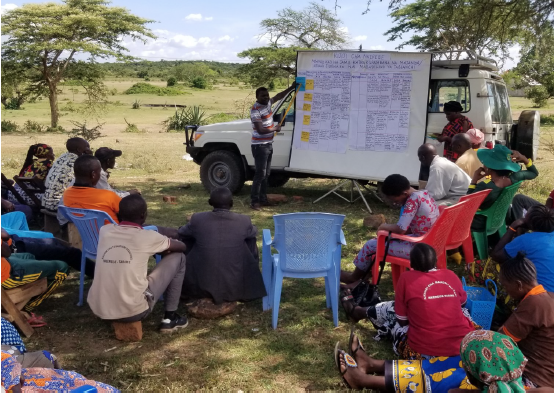8th WORKSHOP FOR PARTICIPATORY RESEARCH DESIGN

Sustainable Agriculture Tanzania (SAT) is inviting undergraduate (only final year) and postgraduate students from Sokoine University of Agriculture to the 8th Workshop for Participatory Research Design (WPRD) which will be held on 11th December 2021 at the MLT 9 SUA MAIN CAMPUS from 08:00 am – 6.00pm. WPRD is part of the Farmer Centred Research Program (FCRP) which provides solutions for small-scale farmers who are practicing agroecological farming methods. The FCRP decentralizes the research process and puts the farmers at the center where they can express their key issues. With addressing these issues students start collaborations with farmers for designing and conducting participatory research. Interested students who want to attend the WPRD, are required to write a One-page concept note based on one component of the research clusters, the concept note should also have students full name, degree programme, phone number, and email address and send their concept notes to the email address of wprd@kilimo.org deadline for submission will be on 7th December 2021 at exactly 04:00pm. Students who will come up with the best concept notes will be invited to join workshop and they will be notified earlier on 9th December 2021. It should be also noted that the selected students will have 5-10 minutes opportunity to present their concept notes to the audience.

The research clusters for 2021/22 will be as follows: -
- Biopesticides
- Appropriate biopesticide for controlling FAW on Maize crop
- Appropriate biopesticide for controlling Tomato diseases such as bacterial wilt, fusarium wilt
- Appropriate biopesticides for controlling Contagious Bovine PleuroPneumonia (CBPP) in cattle
- Biofertilizer
- Appropriate biofertilizer for improving maize yield
- Appropriate biofertilizer for improving tomato yield
- Appropriate biofertilizer for enhancing production of black pepper (which can reduce yellowing, wilting of pepper spikes).
3. Seed Management
Appropriate methods for managing and preserving local maize seeds.
4. Soil management
Folding of groundnuts leaves

The WPRD provide a platform where researchers, research supervisors, organic farmers and pastoralists work together and focus on existing problems related to soil management, marketing, organic crop and livestock production and diseases. The output of the WPRD will be questions identified by farmers, pastoralists and students, which can later be answered through action research (special projects – Bachelor theses).
All invited students will attend the WPRD (8:00am till 12:30pm) which will include:
- Introduction to Agroecology
- Introduction to Participatory Research
- Research Presentation from FCRP 2020/2021
- Podium presentation and Discussion with Farmers & Pastoralists
- Defining Research Questions & Design (Group-work together with farmers and lecturers)
Presenting Research Questions & Design

Afterwards, the students who will present their concept note will be invited to submit another concept note. This concept note will be a suggested special project (Bachelor thesis), which must be in line with a WPRD cluster outcome. The selected bachelor students will receive research grants of TZS 1,100,000/= to conduct research in collaboration with farmers. And the selected postgraduate students will receive a grant of TZS 3,300,000/=.






